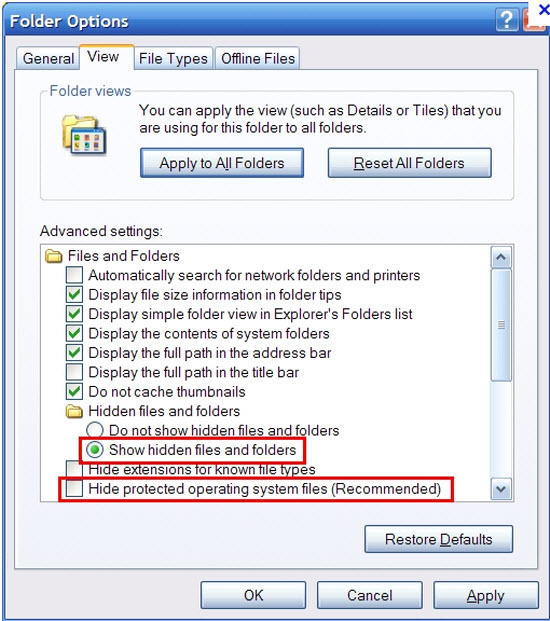Is BrowserSeek Search taking over all your browsers? Why your browser keeps redirecting you to BrowserSeek.com without your permission? If you are suffering from this annoying issue, follow the guide to remove it step by step.
BrowserSeek.com (also called BrowserSeek Search) is categorized as a browser hijacker that forces browser to a particular webpage, inserts advertisements in other web pages, messes up search results or shows various popups in the browser. The purpose of this redirect virus is to make money by creating traffic to specific websites and displaying sponsored links on target computer systems. It can hijack all the browsers you have installed including: Internet Explorer, Mozilla Firefox and Google Chrome.
Generally speaking, this hijacker can be installed from unsafe freeware, shareware or advertising-supported programs such as various browser add-ons or toolbars. Once it is downloaded, it takes control of the browser and forces users into visiting annoying webpages or bogus BrowserSeek Search page. This is just one sample of the multiple domains comprising the infamous “BrowserSeek Search” scam. At first sight, the website itself may appear regular and harmless, it is a spam search engine in reality and does nothing beneficial to you. BrowserSeek.com redirect sends users search traffic in major search engines like Yahoo, Google and Bing to various advertising webpages or counterfeit search related pages. It can hide its presence by injecting running processes and system registry, which make the removal process particularly complicated. Therefore, in order to get rid of BrowserSeek.com redirect completely, manual removal is needed.
When BrowserSeek.com redirect is inside your computer, your security software may be blocked immediately and your homepage will be changed without your permission. In addition, it degrades overall web browser stability and performance as it wastes too much computer resources. The most irritating feature of this redirect virus is that it will keep redirecting you to various harmful websites against your will. If you try to search something from Google, Bing or other search page as your preferred, you will be redirected to other irrelevant page. Thus, BrowserSeek.com removal is needed as soon as possible.
1. It can redirect you to malicious websites with numerous pop up ads to interrupt and stop you from doing anything on your computer;
2. It can turn your computer to run slowly and pose sudden death;
3. It can introduce more unwanted viruses and ransomware to do further harms;
4. It can help cyber criminals track your online activities and capture significant personal data to cause you a loss of value.
5. It can change your default DNS configuration and block you accessing your favorite sites.
6. It forcibly customizes the default homepage, search engine and bookmarks of your compute
Considering BrowserSeek.com redirect can’t be fixed by any security tools, uses can use the manual guide below to fix this issue without any risk.
1. Clear all the cookies of your affected browsers.
Since tricky hijacker virus has the ability to use cookies for tracing and tracking the internet activity of users, it is suggested users to delete all the cookies before a complete removal.
Google Chrome:
Click on the “Tools” menu and select “Options”.
Click the “Under the Bonnet” tab, locate the “Privacy” section and click the “Clear browsing data” button.
Select “Delete cookies and other site data” to delete all cookies from the list.
Internet Explorer:
Open Internet explorer window
Click the “Tools” button
Point to “safety” and then click “delete browsing history”
Tick the “cookies” box, then click “delete”
Mozilla Firefox:
Click on Tools, then Options, select Privacy
Click “Remove individual cookies”
In the Cookies panel, click on “Show Cookies”
To remove a single cookie click on the entry in the list and click on the “Remove Cookie button”
To remove all cookies click on the “Remove All Cookies button”
2. End the malicious process from Task Manager.
Once this dangerous redirect is installed, computer user may notice that CPU usage randomly jumps to 100 percent, slowing down the computer. If your system’s CPU spike is constant, users should check from Task Manager and see if there is a suspicious process occupying the system resources and then end it immediately.
(The name of the virus process can be random.)
Press Ctrl+Shift+Esc at the same time and it will open up task manager directly. Then change to “Processes” tab.

3. Show hidden files and folders.
Open Folder Options by clicking the Start button, clicking Control Panel, clicking Appearance and Personalization, and then clicking Folder Options.
Click the View tab.
Under Advanced settings, click Show hidden files and folders, uncheck Hide protected operating system files (Recommended) and then click OK.

4. Remove all the malicious files manually.
%AppData%Local[random].exe
C:\Documents and Settings\LocalService\Local Settings\Temporary Internet Files\*.exe
C:\Documents and Settings\LocalService\Local Settings\*.*
HKEY_CURRENT_USER\Software\Microsoft\Windows\CurrentVersion\Run “[RANDOM]”
HKEY_LOCAL_MACHINE\SOFTWARE\Microsoft\Windows\CurrentVersion\Run “[RANDOM].exe”
BrowserSeek.com is categorized as a browser hijacker that is distributed to computers through spam emails and compromised websites. It can drop a Trojan to the system without your knowledge and cause system instability. Once it is downloaded, it keeps redirecting you to the website you don’t want. What is more, this type of redirect virus is able to track your activity on the Internet. It records what websites you are visiting and sends this information to the remote server where it is used for marketing purposes. It is not only annoying, but also poses risk to your privacy and computer safety. To sum up, BrowserSeek.com redirect is a dangerous threat that should be deleted timely.
If you are not knowledgeable enough to be able to distinguish the location of this virus, or you are afraid of making mistake during the manual removal, please contact experts from YooCare Online Tech Support for further help.

Published by on May 6, 2013 4:53 am, last updated on May 6, 2013 4:54 am



Leave a Reply
You must be logged in to post a comment.